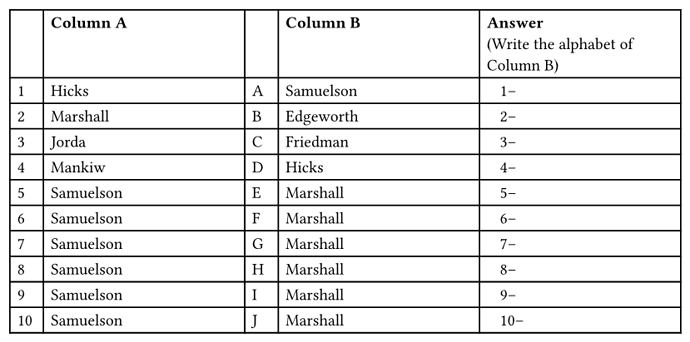you can always write your own:
#let autotable(
fills: ((0, "1"), (2, "A")),
columns: (5%,30%,5%,30%,30%),
header,
..cells
) = {
let rows = cells.pos().chunks(columns.len() - fills.len())
let filled-rows = rows.enumerate().map(((y, row)) => {
for (fill-pos, fill-pattern) in fills {
row.insert(fill-pos, numbering(fill-pattern, y + 1))
}
row
})
table(columns: columns, header, ..filled-rows.flatten())
}
then use it like:
#autotable(
table.header(
[], [*Column A*], [],[*Column B*],[*Answer* \
(Write the alphabet of Column B)]
),
[Hicks],[Samuelson],[#h(0.8em)1--],
[Marshall],[Edgeworth],[#h(0.8em)2--],
[Jorda],[Friedman],[#h(0.8em)3--],
[Mankiw],[Hicks],[#h(0.8em)4--],
[Samuelson],[Marshall],[#h(0.8em)5--],
[Samuelson],[Marshall],[#h(0.8em)6--],
[Samuelson],[Marshall],[#h(0.8em)7--],
[Samuelson],[Marshall],[#h(0.8em)8--],
[Samuelson],[Marshall],[#h(0.8em)9--],
[Samuelson],[Marshall],[#h(0.8em)10--],
)
(it’s not very robust of course)
